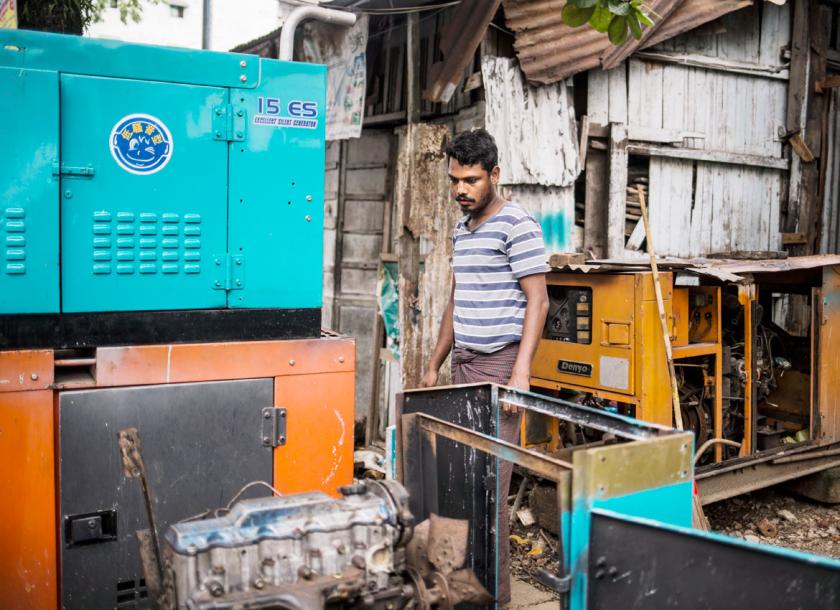Industry insiders discussed options to plug the gap between demand and supply of electricity by importing Liquefied Natural Gas (LNG)
2 กรกฎาคม 2561
At a Yangon energy seminar last week, industry insiders agreed that demand for electricity in Myanmar is rising much faster than supply can keep up with it. However, views on how best to solve the country’s chronic shortage of power soon diverged.
Currently, electricity consumption in Myanmar stands at 3,300 MW. With demand expected to rise by around 15 percent each year for the next two years, total consumption could rise to as high as 5,000MW by 2020.
As of now, the government plans to plug the gap between demand and supply of electricity by importing liquefied natural gas (LNG). It is currently in the process of negotiating the Power Purchase Agreements involved.
But importing LNG is ultimately very expensive, so cheaper alternatives to producing power should have been explored before resorting to LNG, said energy analyst U Myo Myint.
U Aung Myo Win, deputy director at the Planning Division under the Department of Electric Power and Planning, pointed out that the government opted for LNG due to the long periods involved in harnessing hydro power.
In addition, domestic gas production has been declining. “It is not good to rely only on one single source of energy in the long run. It is more reliable to use all available sources, which includes LNG,” he said.
U Aung Myint, general secretary of the Myanmar Renewable Energy Association, said centralised distribution of electricity by the States and Regions through the national grid should be reduced. Meanwhile, private businesses should be allowed to generate and distribute electricity through mini grids or by harnessing solar energy.
U Myo Myint added that existing power plants should also be upgraded and renovated to reduce transmission losses and raise production efficiency, as this could save the government up to $2 million in operating costs.
For funds to conduct those upgrades, U Kyaw Kyaw Hlaing, chair of the SMART Group of Companies, was adamant that the government should stop subsidising electricity tariffs. “The State is subsidising between K300 million and K400 million in tariffs for 3.5 million households,” he said.
“The subsidies should stop and the price of electricity must be increased. We will never get enough electricity until the government increases the electricity charges. But the government doesn’t want to do anything that the public will dislike,” said U Kyaw Kyaw Hlaing.
One way around that is by investing more in onshore gas production. “Offshore gas costs $7 per cubic meter to produce but onshore gas costs below $3. If we rely on onshore gas to produce more power, we do not need to increase electricity charges. Therefore, we need to find onshore gas as fast as we can. If we explore for gas at marginal onshore fields, we can extract onshore gas within the two years,” said U Kyaw Kyaw Hlaing.
(The Myanmar Times: https://www.mmtimes.com/news/industry-discusses-options-plug-shortage-gas-supply.html )











